11 Sunrise Routines to Help You Lose Weight in 30 Days

Steady weight loss is easiest with sustainable, long-term habits that help take the fat off and keep it off, too. Your morning routines and rituals can set you up for a day of success, setting the tone for the whole day. "A good morning routine can positively influence your attitude, energy level, and performance throughout the day," says Harvard University. Here are 11 sunrise rituals to help you lose weight, get fit, and positively impact your mental health in 30 days.
Meditation

Meditation is a great way to manage stress, which is linked to weight gain. "The link between stress and weight gain is real," says the Cleveland Clinic. Those elevated cortisol levels circulating in your body lower your metabolism and encourage cravings for fat and sugars."
Yoga
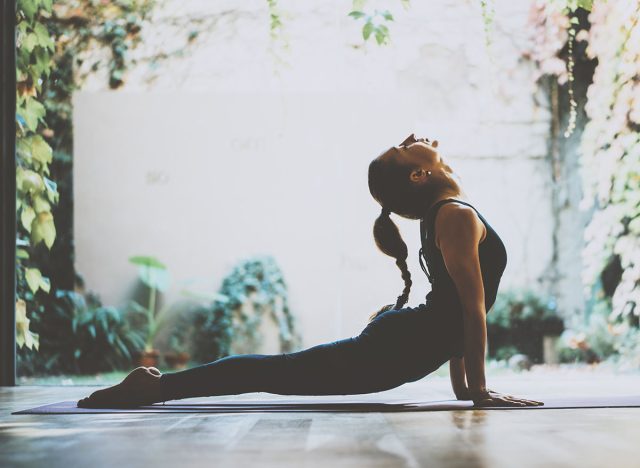
Yoga is a wonderfully gentle way to start the day. "There is good research that yoga may help you manage stress, improve your mood, curb emotional eating, and create a community of support, all of which can help with weight loss and maintenance," Chika Anekwe, MD, MPH, and Niyoti Reddy, MD, tell Harvard Health. "Yoga can also help you burn calories, as well as increase your muscle mass and tone. Yoga may reduce joint pain, which in turn allows you to exercise more and increase your daily activities. These are only some of the many benefits of yoga."
Drink Water

Start the day with a glass of water. "Over night, the body can become relatively dehydrated," Dr. Maria Peña tells USA Today. "What many people do first thing in the morning is grab a cup of coffee. When you get a cup of coffee, also get a bottle of water."
Try Journaling
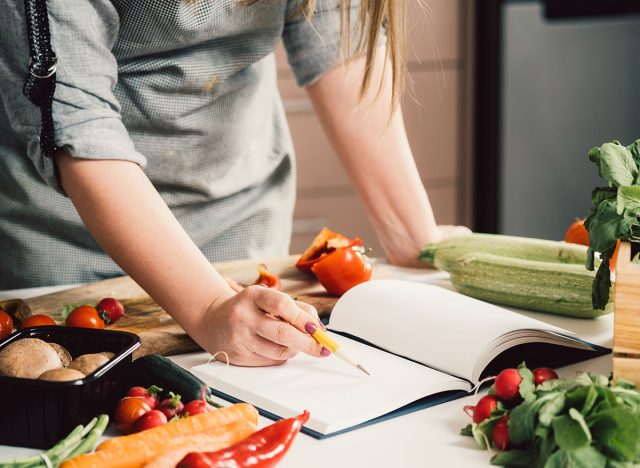
"Sometimes negative thoughts and emotions can run on a loop in our heads," says Kaiser Permanente. "This can be stressful when you're dealing with a challenging situation. And it can even make your present situation feel worse. But if you stop and put your emotions down on paper, it can help you release negative thoughts from your mind. As you write, you may even come up with a solution you hadn't thought of before.
Go For a Walk

A brisk morning walk will boost your mood for the rest of the day. "Starting your day with a morning walk helps you check something important off your daily to-do list – your fitness," says Henry Ford Health. "Even if you only have time for a 10-minute walk each morning, you'll have up to 70 minutes of exercise by the end of the week. And any type of movement that you add in later in the day, whether it's taking the stairs or walking to your car at the far end of the parking lot, improves your overall health."
RELATED: 14 Simple Lifestyle Changes That Melt Away 1 Pound a Week
Drink Tea

Tea provides a nice little caffeine boost and assuming you don't add anything to it, is practically calorie-free. "Green tea is exceptionally high in flavonoids that can help boost your heart health by lowering bad cholesterol and reducing blood clotting," says Penn Medicine. "Studies show this type of tea can also help lower blood pressure, triglycerides and total cholesterol."
Eat Eggs
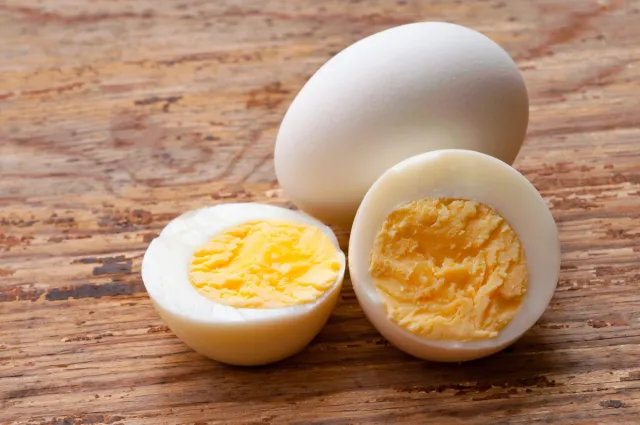
Eggs are a powerhouse of nutrition and a fantastic breakfast choice for weight loss. "Eggs are a good source of protein (both whites/yolk). They also contain heart-healthy unsaturated fats and are a great source of important nutrients, such as vitamin B6, B12 and vitamin D," says Kurt Hong, MD, an internal medicine specialist at Keck Medicine of USC.
RELATED: 11 Best Foods to Burn Fat Quickly
Weigh Yourself
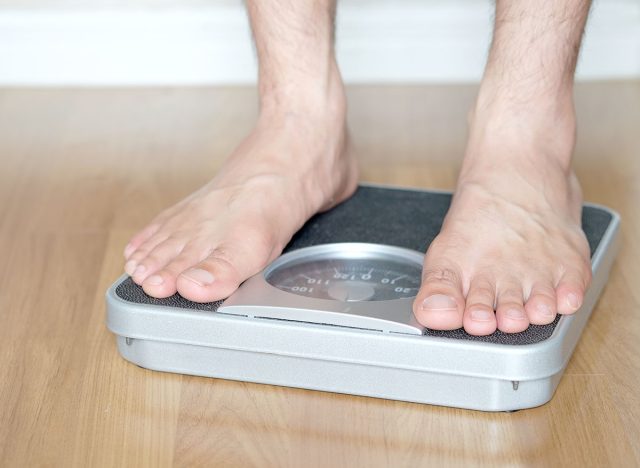
While this may not be ideal for everyone, research shows weighing yourself daily can improve weight loss efforts. "That's an action we call self-monitoring, which is an evidence-based strategy that we use with all kinds of behavior change," psychologist Amy Walters tells the American Heart Association. "Tracking your behavior gives people some accountability, it can create some natural feedback, and it can serve as a source of motivation. They see, 'Gosh, if I really follow my plan, I start to see some changes.'"
Get a Workout In
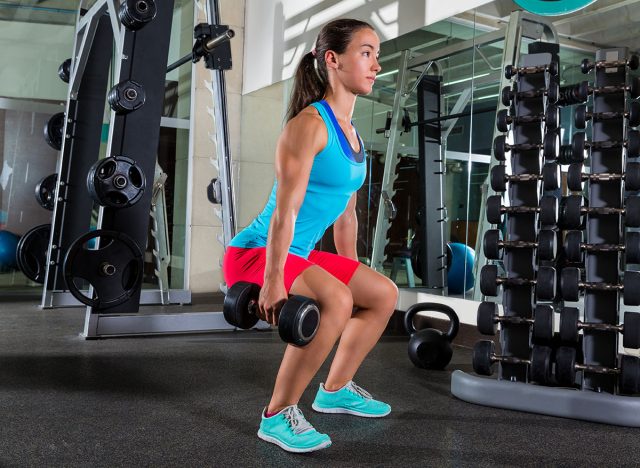
Research shows that people who work out between 7 a.m. and 9 a.m. had lower BMIs than people who worked out later. "My cautious suggestion from this study is that if we choose to exercise in the early morning, before we eat, we can potentially lose more weight compared to exercise at other times of the day," research assistant professor at The Hong Kong Polytechnic University Tongyu Ma tells NBC News.
Pack Your Lunch
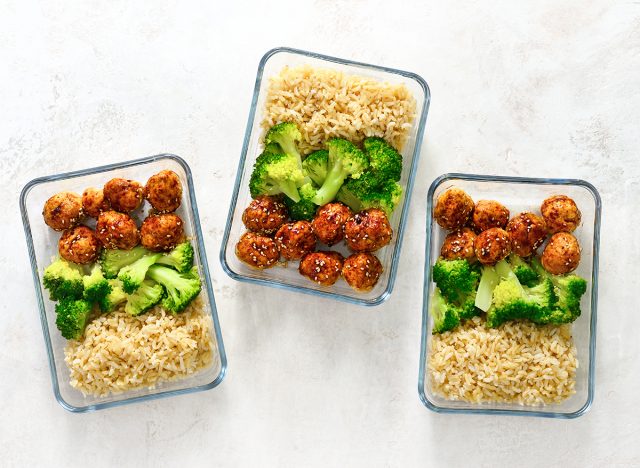
Use your time in the mornings to pack a healthy lunch that will help you reach your weight loss goals. "Planning your own meals will allow you to see how much you're actually eating," says Corewell Health. "This also prevents you from overeating at restaurants, which tend to serve a way bigger portion than you should actually be eating."
RELATED: Burn Belly Fat While You Sleep with This Healthy Drink
Go Out Into Daylight

Morning sunlight is good for your circadian rhythm, which means good sleep, which is essential for weight loss. "Many people today are working remotely or are in offices with little natural light exposure," Jamie Zeitzer, PhD, tells the Stanford Center on Longevity. "Many of these same people may tend to struggle with sleeping at night and are unaware of how a few changes to their lifestyle may help them begin to improve their sleep. Finding lifestyle habits to prioritize early morning and daytime sun exposure can help to improve sleep later that night." And if you enjoyed this article, take advantage of these 15 Quick Ways to Lose Body Fat Percentage in a Week.




